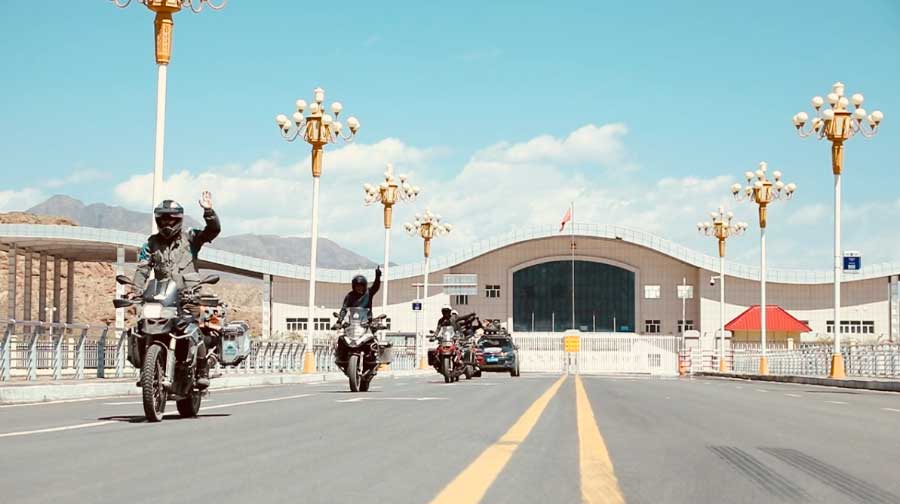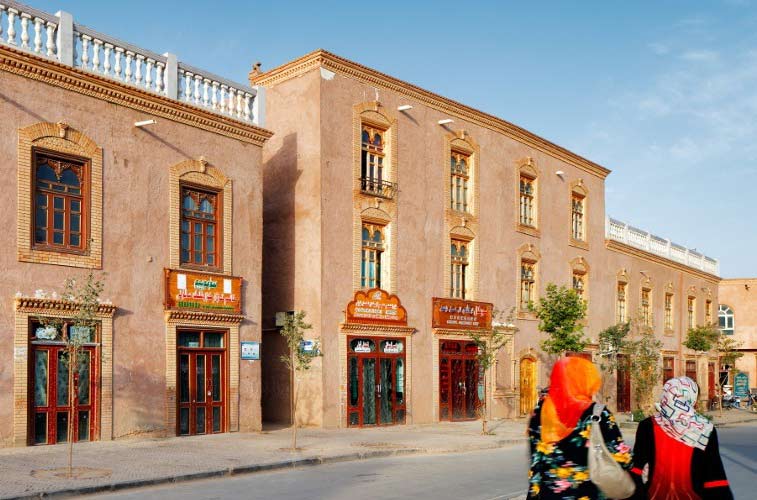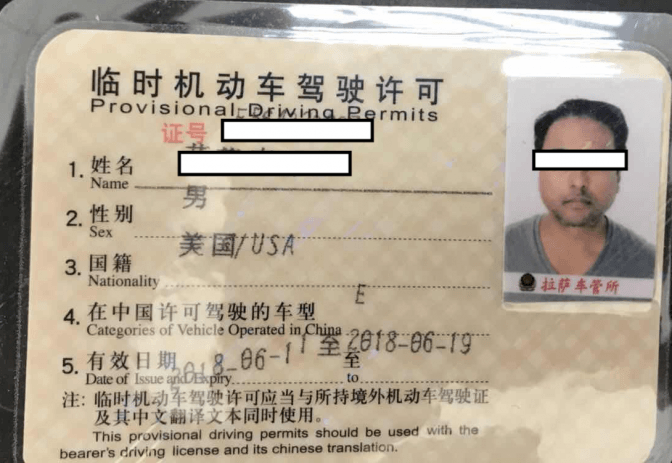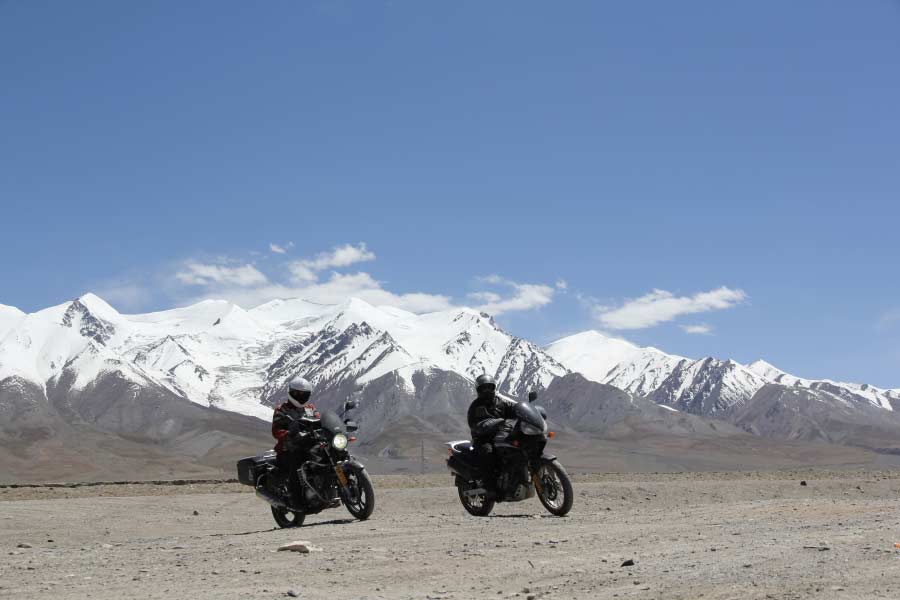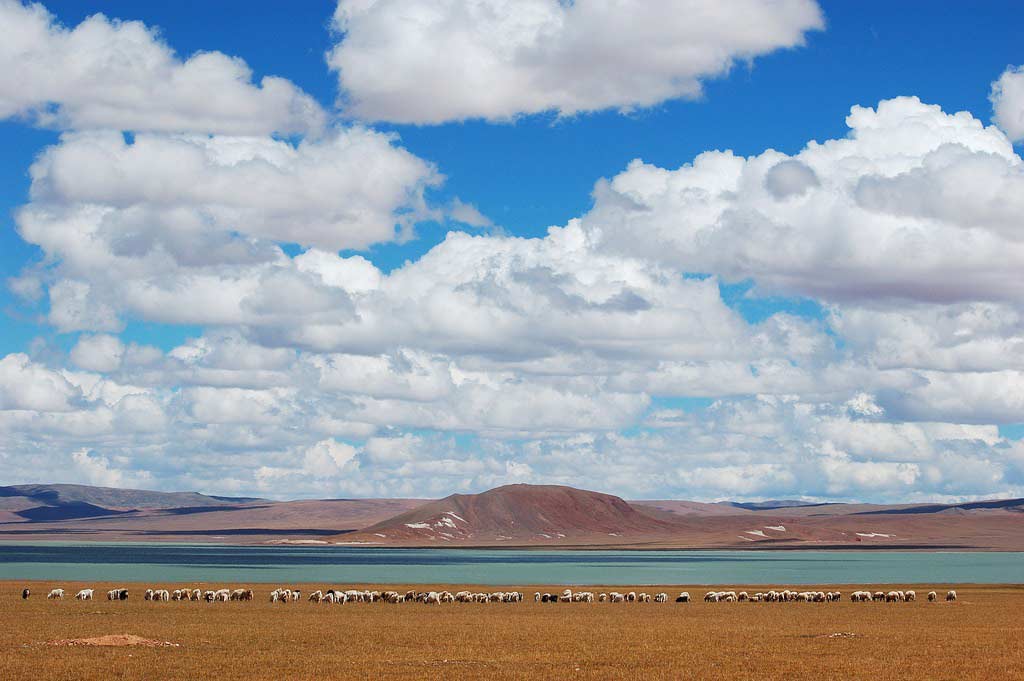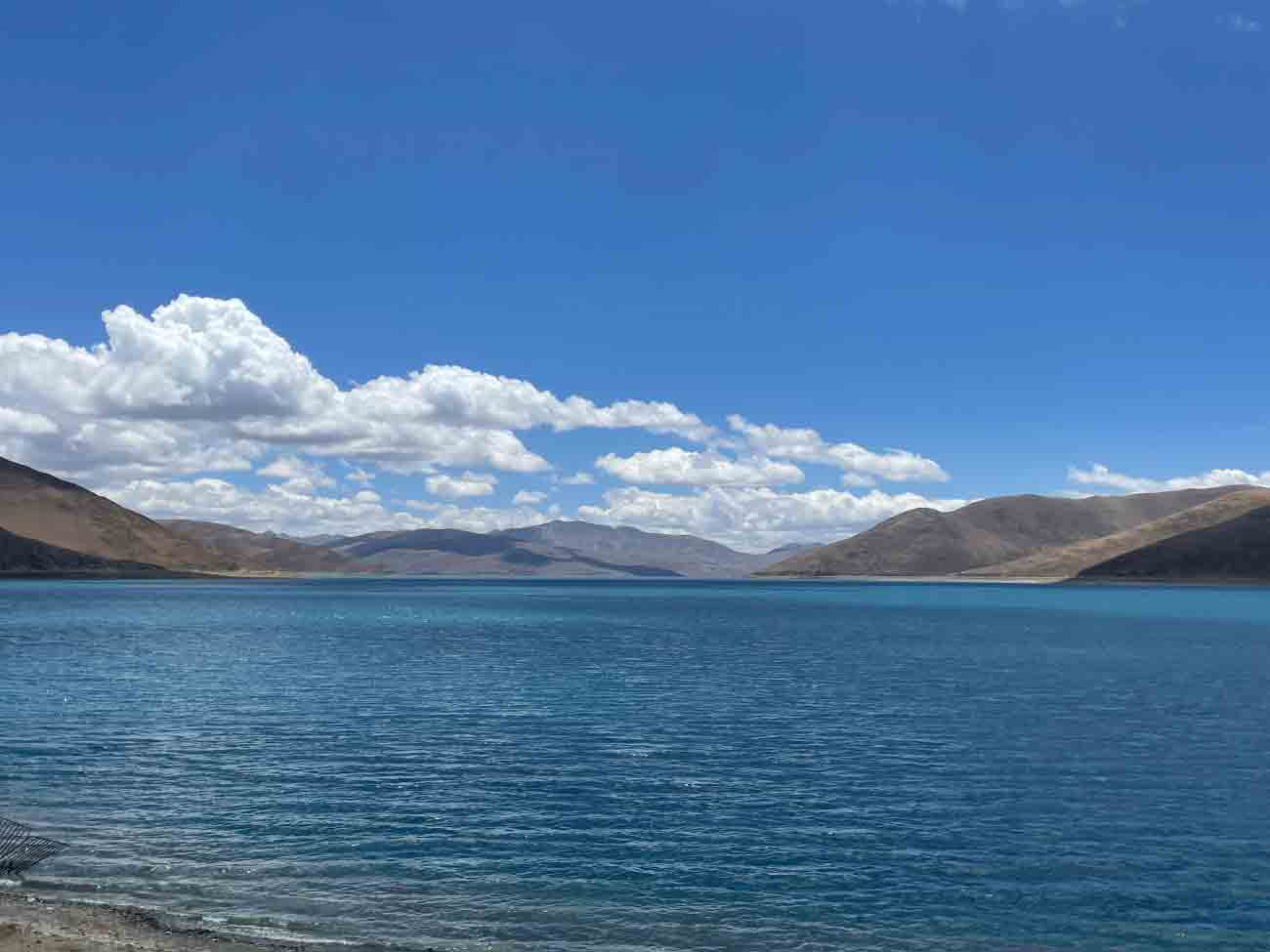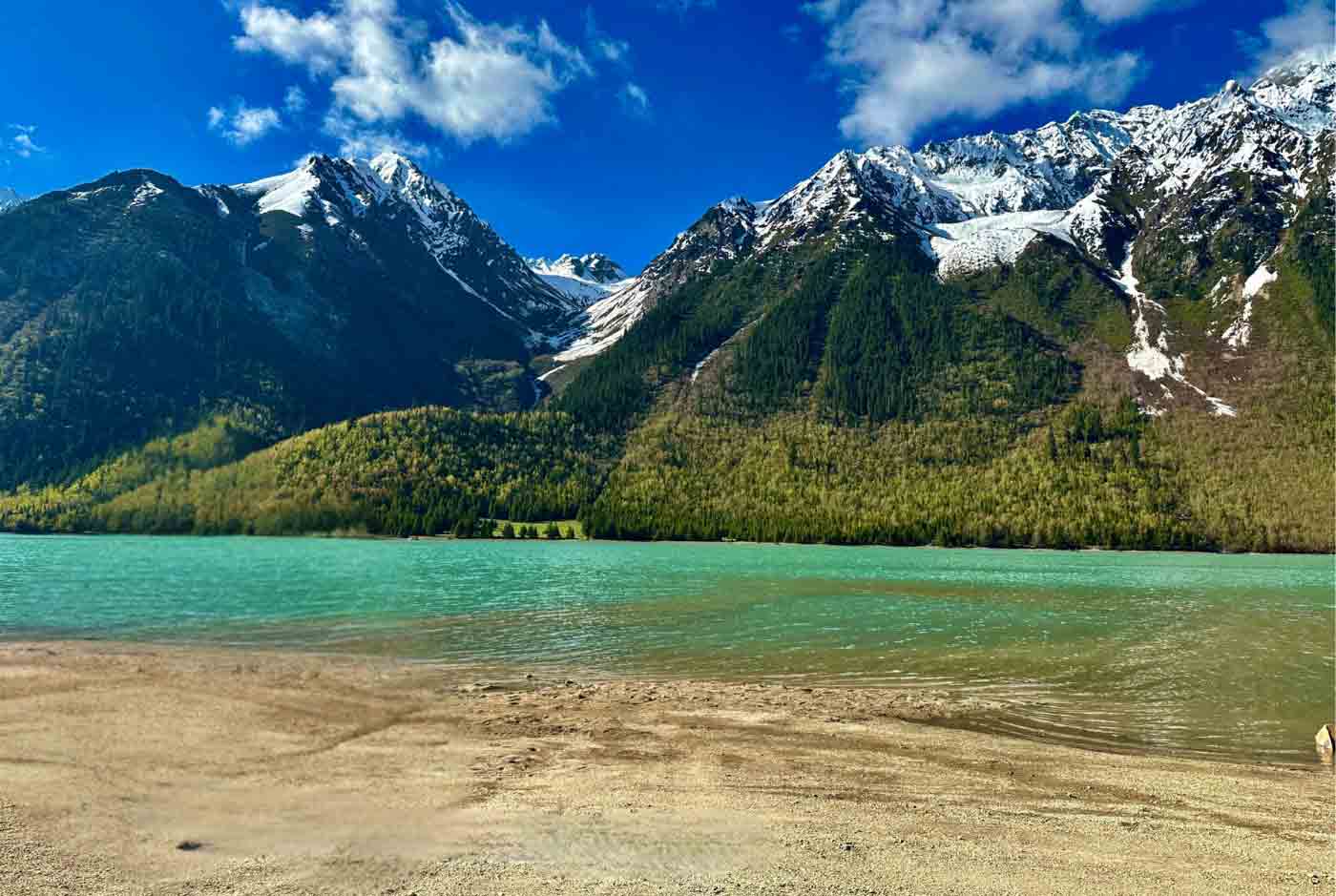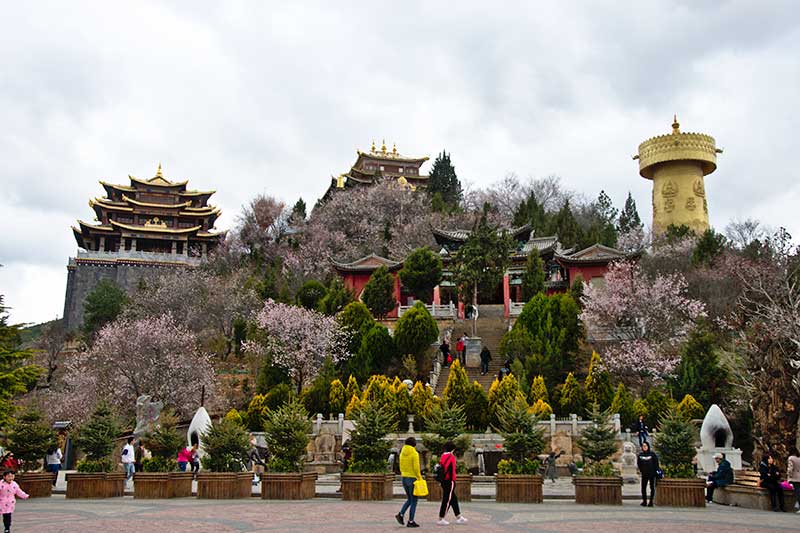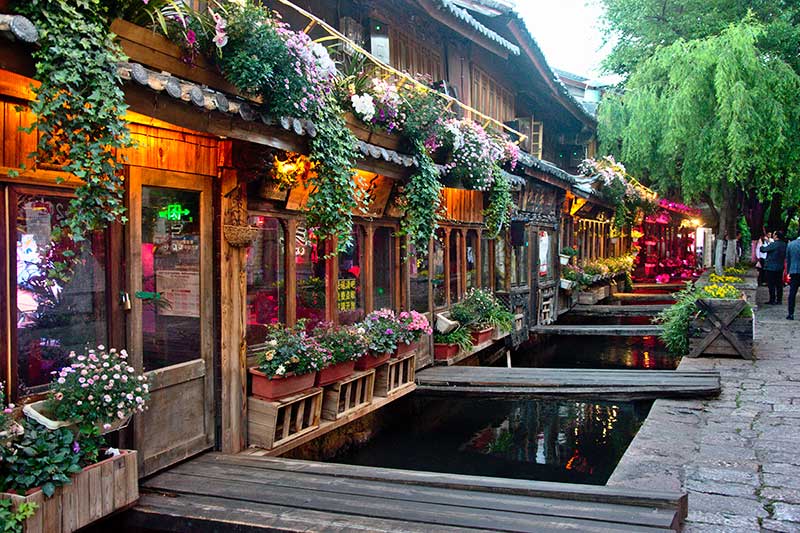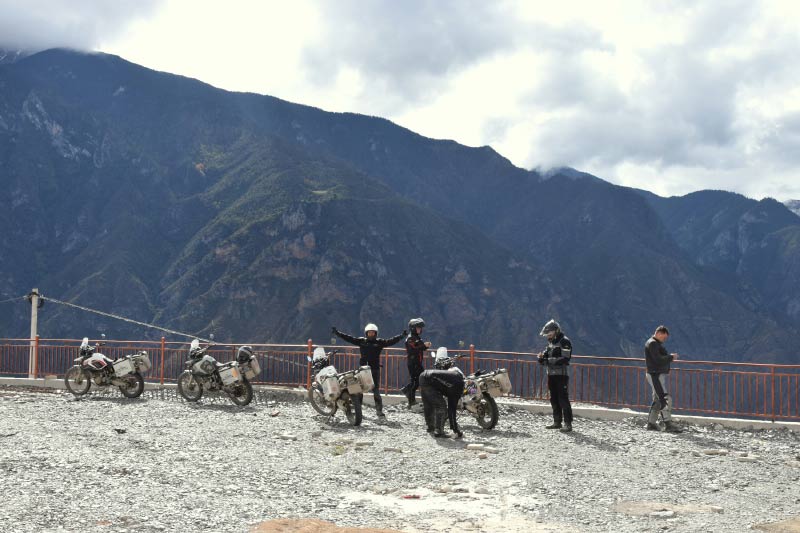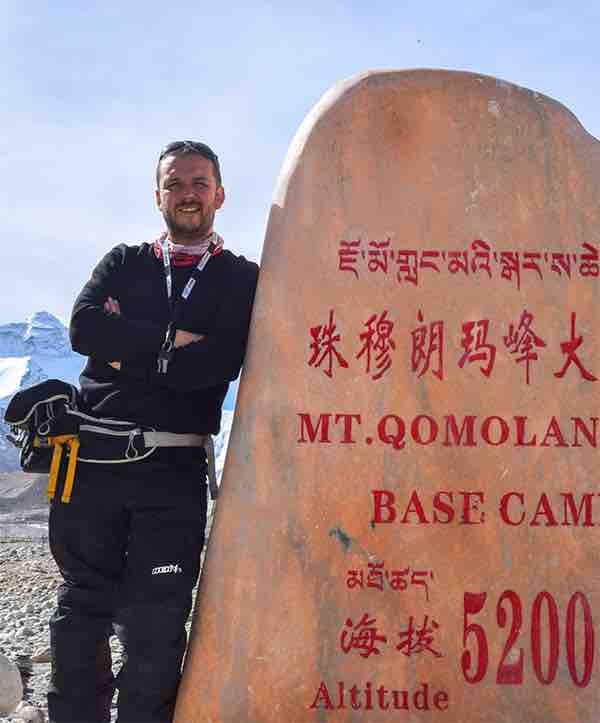


China Overland Group Tour
From Kyrgyzstan to Nepal or Laos via the Chinese provinces Xinjiang, Tibet & Yunnan
Embark on an unforgettable journey to discover the fascinating highlights of Tibet and Southwest China, all the way to the Nepalese or Laotian border. Experience first-hand the breathtaking vastness and beauty of the Tibetan high plateau. The journey takes you to the historically rich Lhasa, vibrant Yamdrok Lake, and next, to the base camp of the majestic Mount Everest, before either descending westward into subtropical landscapes to the Nepalese border from Everest base camp or climbing the eastern foothills of the Himalayas on the way to the Lao border. For those continuing to Laos, be enchanted by the picturesque old towns of Lijiang and Dali and enjoy the captivating subtropical landscapes as you make your way through Yunnan province.
As private China overland tours may be too expensive for some, we have created this affordable China overland open group tour from Kyrgyzstan to Nepal or Laos for this very reason. Discover the beauty of Asia together with like-minded travelers and create unforgettable memories along the way.
2026
Tour Date 1
Exit to Nepal: 24.08. – 08.09.
Exit to Laos: 24.08. – 20.09.
Tour Date 2
Exit to Nepal: 12.10. – 27.10.
Exit to Laos: 12.10. – 08.11.
Hotels/Accommodation including breakfast in selected mid-range hotels, guesthouses and simple accommodation in remote regions (Bathrooms always en-suite)
Exit to Nepal
16 days / 15 nights / 13 driving days
Exit to Laos
28 days / 27 nights / 24 driving days
Questions & Answers
After booking we provide a detailed list of documents required for your journey through China, however here is a preliminary list:
- Valid passport (minimum 7 months validity beyond the tour end)
- 4–6 blank passport pages
- Original vehicle registration
- Proof of vehicle ownership
- Valid driver’s license from your home country
We organize the temporary Chinese driving license, vehicle license plates, and all entry and travel permits, for which we will require additional documents.
The tour begins at Kyrgyzstan–China’s Kashgar border at Irkeshtam and ends either:
- at Nepal’s Rasuwa Gadhi friendship bridge border near Gyirong, or
- at Laos’ Mohan/Boten border.
Tour length and price vary by exit point.
The tour covers a wide range of climates due to the altitudes and regions we travel through.
August departures:
- Xinjiang/Taklamakan: very warm to hot, 30–38°C
- Tibetan Plateau: cool days, cold nights, occasional rain
- Yunnan: subtropical, humid, chance of rain
October departures:
- Xinjiang: mild days, colder nights
- Tibetan Plateau: noticeably colder overall with night temperatures often below freezing
- Yunnan: mild and comfortable daytime temperatures
Drivers should expect rapid weather changes at high altitude.
Motorcyclists must bring proper layered riding gear, cold-weather protection, and rain gear, as wind chill can be significant above 4,500–5,000 meters.
Our service car accompanies the group throughout the journey. It carries tools, permits, and luggage if necessary. In case of a breakdown, one motorcycle can be transported for short distances until repairs are possible. Vehicles should be maintained and in good condition before tour start to avoid major issues.
We normally depart between 8:00 and 9:00 AM. Daily driving time averages 6–7 hours including photo stops and short breaks. Lunch is usually a one-hour stop maximum. We arrive at the hotel in the mid or late afternoon, with time for rest or exploring the area. Some days include border procedures or permits, which may extend the schedule.
Fuel, personal expenses, drinks, and meals other than breakfast are not included. Bring enough cash for remote areas where card payment is not guaranteed.
Paying with credit card or cash is also becoming increasingly difficult in China. Most Chinese people use apps for cashless payments, with which they then scan QR codes.
To enable hassle-free payment on-site, we recommend the AliPay app by Alibaba Group. AliPay can be linked to a credit card, and the amounts will then be debited from it. AliPay can be used almost everywhere in China and now also in other countries. Moreover, the app has an integrated translation program and much more.
Accommodation includes selected mid-range hotels and comfortable guesthouses. In remote locations, lodging can be simpler but always offers private en-suite bathrooms and is the best available in the area.
Participants should be confident in handling their vehicle on mountain roads, gravel surfaces, and in high-altitude environments. Basic overland experience is recommended for a comfortable and safe journey.
Yes, the tour reaches altitudes above 5,000 meters. The itinerary includes gradual ascents and rest days in Lhasa and Tingri to allow for acclimatization. Severe altitude sickness cases are rare, but we recommend consulting your doctor regarding preventive medication such as acetazolamide.
Starting from Lhasa we will provide medical oxygen. This can support a person with oxygen for up to 24 hours. Before starting the China Overland Group Tour, you should also contact a doctor who will prescribe Diamox. Diamox is a drug that can be taken prophylactically to prevent altitude sickness. As a result, groups that take Diamox hardly or not at all experience altitude-related symptoms. For a smooth running of the tour, the personal health and well-being of each participant is important. We therefore strongly recommend that you consider taking Diamox.
If you join us until the 1st border to Nepal, you will cover about 4.700 km.
If you drive to the 2nd border to Laos, you will cover about 8.000 km.
This program is specifically designed to make China overlanding with your own vehicle more affordable by sharing the cost of permits with other travelers. It allows a shared experience while maintaining the freedom of using your own vehicle.
Fuel supply is consistent throughout the itinerary. In remote areas, octane ratings may be lower than in your home country, but modern motorcycles, 4x4s, and SUVs generally operate without issue. Carry octane booster if your vehicle requires high-octane fuel.
Yes, comprehensive travel insurance including medical coverage and emergency evacuation is strongly recommended. Participants are responsible for any medical or evacuation costs. Insurance for vehicle recovery is also advised.
Yes. Independent travel in Tibet is not allowed. We arrange the Tibet Alien Travel Permit and all additional permits needed to legally drive your own vehicle through Tibet (military permits, PSB permits, itinerary permits, tourism bureau permits).
This depends on your nationality. All participants require a valid China visa. For many nationalities, a China Visa on Arrival can be arranged as part of the tour. Your passport must be valid for at least seven months beyond the tour completion and contain 4–6 blank pages for visa stamps. We provide the required invitation documents.
This depends on your nationality. China currently allows citizens of several countries to enter visa-free for up to 30 days for tourism. As of now, this includes nationalities such as Germany, France, Italy, Spain, The Netherlands, Austria, Switzerland, Belgium, Luxembourg, Hungary, Poland, Ireland, and others in Europe.
However, visa policies are subject to change, and the current 30-day exemption has only been officially confirmed until the end of 2025. All participants must check the most up-to-date visa regulations for their nationality at the time of booking.
Australian, New Zealand, and United Kingdom passport holders currently require a visa for China.
Please note your passport must be valid for at least seven months beyond the end of the tour and contain 4–6 blank pages for visas, permits, and customs stamps.
No. Foreign vehicles must follow a pre-approved itinerary and be accompanied by a licensed Chinese guide. Independent overland travel in China is not permitted.
No. It is strictly prohibited to leave China without your vehicle. Even in case of mechanical failure, your vehicle must be exported from China regardless.
No. China does not recognize foreign or international driver’s licenses. We arrange your temporary Chinese driving license, including administrative procedures and medical checks. Passengers can also receive a temporary license to share driving duties whilst on tour.
No. The entire route, including each overnight location, must be pre-approved by Chinese authorities as part of the permit process. Any deviation from the itinerary would invalidate the permits issued for the tour. For this reason, independent detours or changes to the route are not allowed.
We recommend an international e-SIM, such as the Airalo app. There, you can buy data volumes for regions or individual countries.
It is rather cumbersome to buy a SIM card locally due to the registration process.
Please note that almost all Western apps are blocked in China. This includes Google, WhatsApp, Facebook, Instagram, etc. This can limit communication. Those who purchase a roaming package from their provider before starting the trip can bypass the blockade, and all services can be used. For comparison: those using airport or hotel Wi-Fi cannot access these services. We inform about this because we want to avoid communication problems, especially upon arrival.

